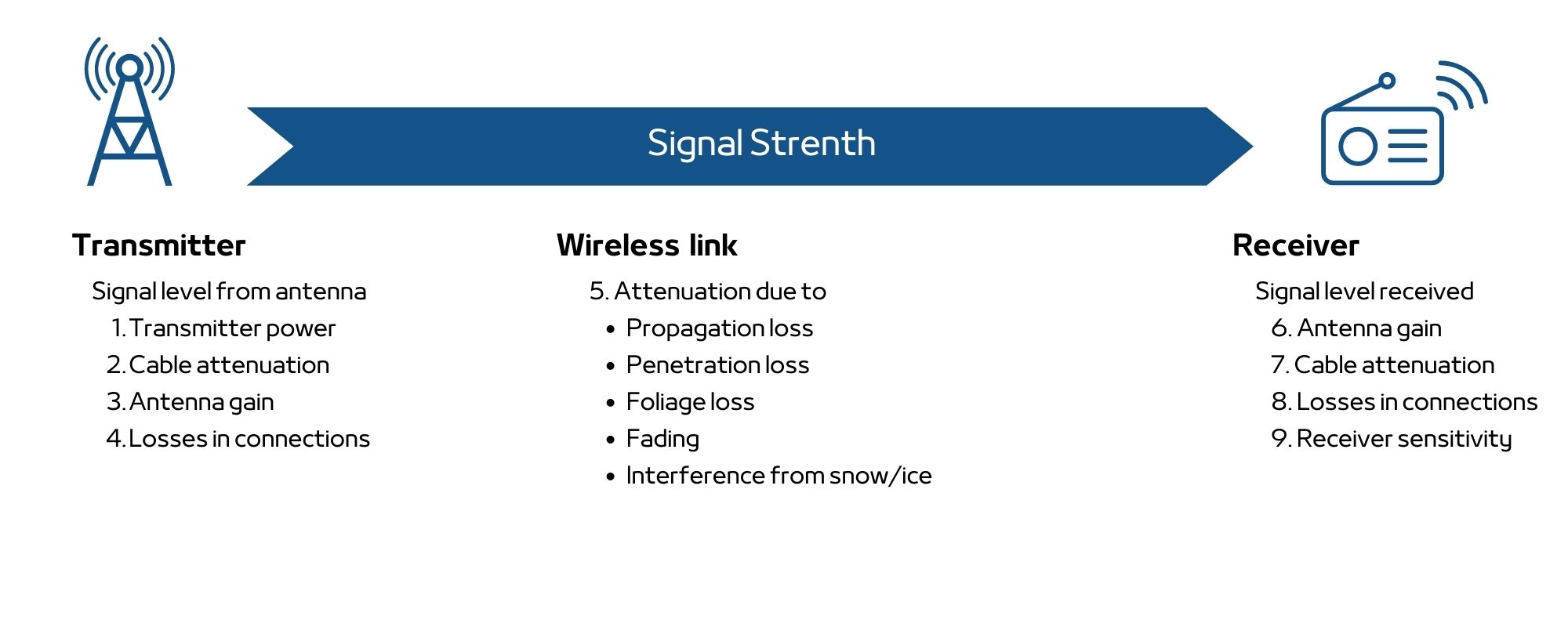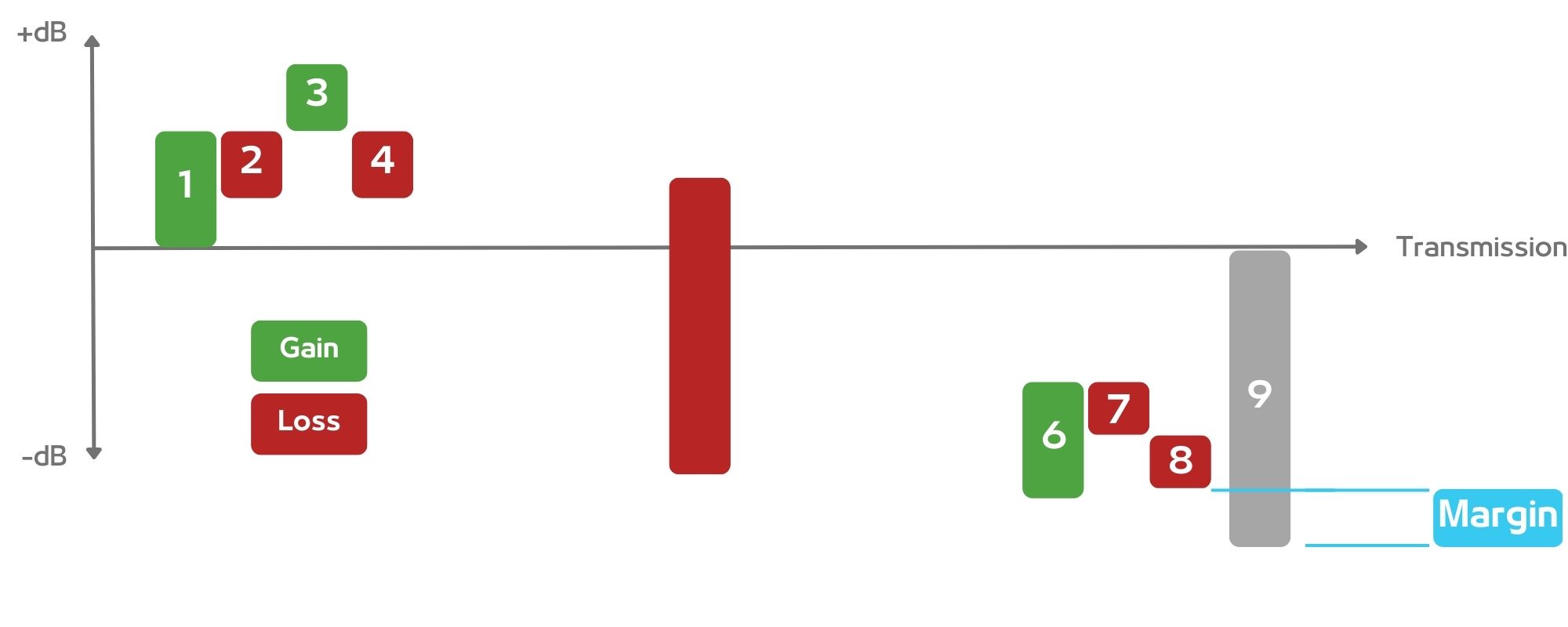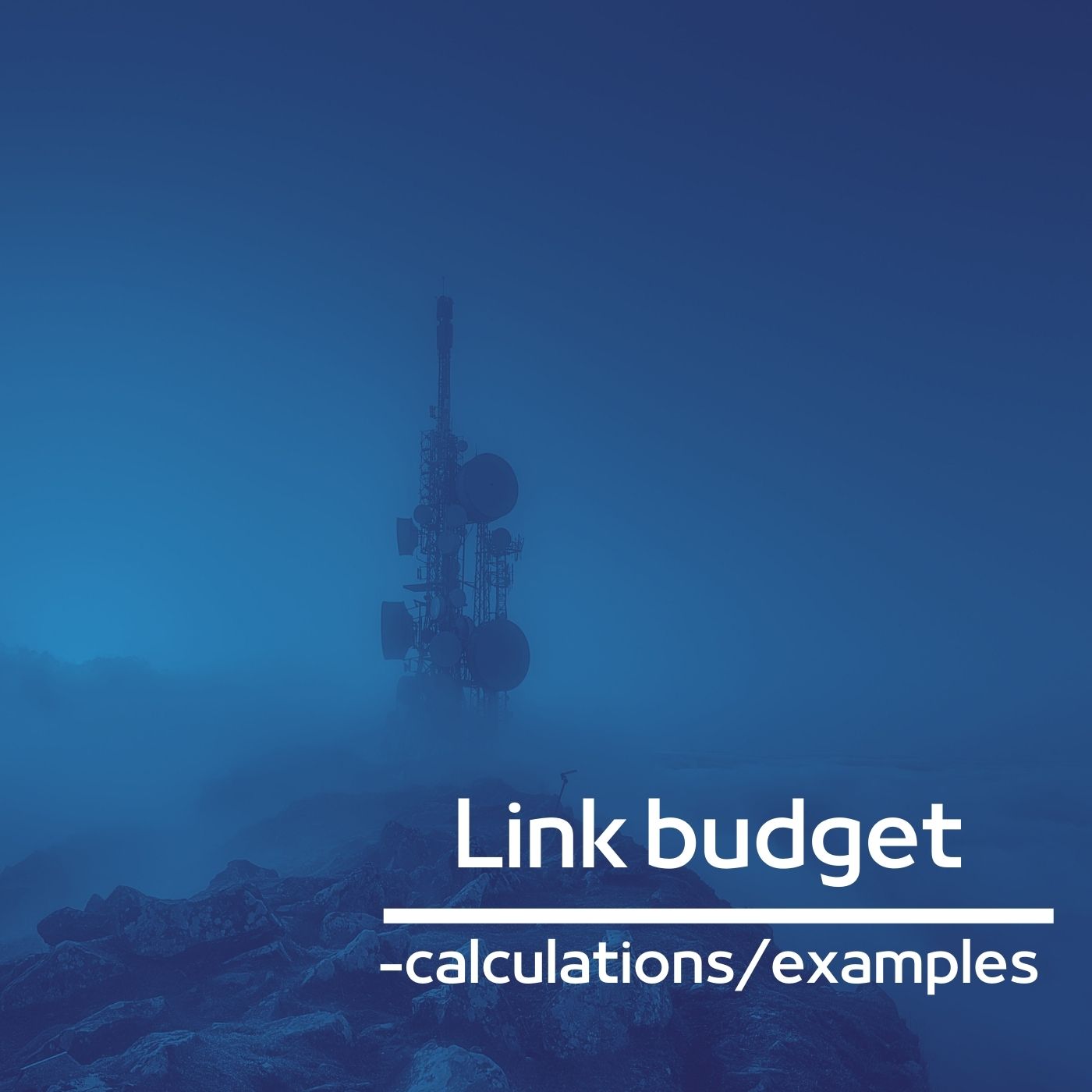A link budget shows how a communication signal is amplified and weakened in a link, a connection in a communication system. Although link budgets can cover everything from coaxial cable networks to fibre or radio links, we will focus on radio links in this post. Radio links like mobile or private radio networks behave similarly regarding link budget.
With this knowledge, it is possible to determine if the power and amplification levels are sufficient in a system. One can then take corrective measures to ensure that the system operates satisfactorily. If the signal levels are too low, one can add amplifying antennas. One can choose a simpler antenna to save costs if they are sufficiently high.
Who uses link budgets?
Link budgets are used in many applications, especially wireless networks.
Does Linkbudget matter for all wireless links like LoRaWAN or 4G? Yes, link budget calculations apply for all wireless connections, including those that use LoRaWAN, LTE-M and NB-IoT. Link budget calculations determine the expected performance of the wireless link, including the maximum distance. This information can help design and optimize wireless networks. However, if you are using a network operated by a telco, you may only be able to adjust metrics on the device side. If you plan your network, it can help you meet specific performance requirements and can help to identify potential problems and solutions to improve network performance.
Calculations similar to link budgets are also found in the form of digital tools for mapping wireless systems. We usually call them simulations, where we simulate a radio link in a computer environment. These tools look at how radio signals spread and the power levels, antennas, and receiver sensitivity levels required to provide the necessary link quality.
Calculating the link budget for a wireless link is important for several reasons.
1. It helps to determine the strength of the transmitted signal and the received signal at a given distance, considering various losses and gains along the way. This information is critical for designing an efficient and reliable wireless communication system.
2. It helps optimize the use of power and other system resources by determining the minimum amount required to maintain a reliable communication link.
3. It helps to identify potential sources of interference that could impact the wireless link’s performance.
4. By thoroughly analyzing the link budget, one can identify areas of the wireless communication system that require improvement or optimization. Calculating the link budget is a crucial step in designing, deploying, and maintaining wireless communication systems.
Why link budget?
A link budget is calculated to ensure that the system, once installed and ready for operation, has sufficient signal and margin to function correctly. Developing a link budget is essential to clarify whether the transmitter’s signal is strong enough to reach the receiver. Using an equation, one looks at what part of the transmitter power reaches the receiver after attenuation of the transmitted signal due to propagation, antenna gains, cable attenuation, and other losses. But one also looks at signal amplification along the way in the form of amplifying signals like antennas that the signal passes through.
The equation
A simple equation for link budget looks like this:
Received Power (dBm) = Transmitted Power (dBm) + Gains (dB) – Losses (dB)
Power levels are expressed in (dBm), and power gains and losses are expressed in decibels (dB).
To develop a radio link budget formula, one must examine all parts of the system where gains and losses can occur between the transmitter and receiver. Guidelines and suggestions can be given for possible areas of loss and gain, but each link is analyzed and mapped on its own merits. But let’s not complicate things unnecessarily. A typical link budget for a radio communication system might look like this:


For the more advanced
A typical link budget equation for a radio communication system would then look like this:
PRX = PTX + GTX + GRX – LTX – LFS – LP – LRX
These mean:
PRX = Received power (dBm)
PTX = Transmitter power (dBm)
GTX = Transmitter antenna gain (dB)
LTX = Antenna cables and connectors losses on the transmitter side (dB)
LFS = Path loss in the air (dB)
LP = Losses in wave propagation (fading, polarization mismatch, diffraction) (dB)
GRX = Receiver antenna gain (dB)
LRX = Antenna cables and connectors losses on the receiver side (dB).
Link budget for radio systems
For a radio system with line-of-sight, the primary source of loss is the reduction in signal power due to uniform wave propagation.
Link budget for radio systems
For a radio system with line-of-sight, the primary source of loss is the reduction of signal power due to free space propagation.
Omnidirectional antennas without antenna gain are rare in telecommunications systems, so almost every equation for link budget must consider antenna gain.
Directional antennas aim the signal in a specific direction and add antenna gain to the link budget. The receiver antenna is also typically directional in such systems, adding antenna gain.
Antenna cables attenuate differently depending on length and material, which must also be considered in the calculation as a signal loss.
The magic air
The most significant attenuation is found in the air. Trees, mountains, and other obstacles cover the Fresnel zone and add losses due to partially blocked line-of-sight. A radio link works best in line-of-sight, but this scenario is rarely found. The Doppler effect, which weakens the signal, and various types of fading caused by obstacles must also be considered.
If the estimated received signal power is sufficiently large in relation to the receiver’s sensitivity, the link is usable for transmitting data. The link margin is the value by which the received power exceeds the receiver’s sensitivity. If there is a 6-9 dB margin, there is often a sufficient margin for compensating for foliage, changing terrain, and other factors for bands below 1 GHz.
Losses, especially in the air, can vary over time as buildings are torn down, new ones are built, and nature changes. This must be taken into account in the link budget – often, one can assume the worst-case scenario and add the link margin described above.
What to do with a low margin?
To increase the margin, one can raise the antennas above the ground, choose a more powerful antenna, and use an antenna cable that attenuates less.
Can losses be compensated for?
It depends. Some transmission protocols can tolerate an increased bit error rate (for digital signals) or a degraded signal-to-noise ratio (for analogue signals). This manifests as either increased bit errors (for digital links) or increased noise (for analogue connections).
Important to do the homework
Calculating the link budget is an important step in the design of a radio communication system. Calculating the link budget allows for seeing losses and gains. Developing a link budget can optimize losses, gains, and power levels and make the right changes for the radio communication system to meet its operational requirements. Only by performing a careful analysis of the link budget is this possible.

